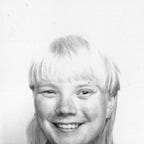Residue, resistance, and remembrance.
These three artists; Alexandra Ragg, Casper Connolly, and Jasper Jordan Lang interrogate the importance of objects, and the psychology, if any, behind the banal.
All exploring spatial practice as social practice, the artists in this exhibition replicate, set, arrange, and trace object’s known and unknown histories.
**
I remember when I saw this when I was little. It was like some magnetic forcefield drawing me to the sculptures. I didn’t know what they were, my growing mind hadn’t made the connection yet. I remember we talked about ancient Farmer’s Almanacs in school, some mystical, old tablets that are to act as writing for farmers on how the last year crops were grown, they were to tell farmers in the future how things had been done.
A sense of community, knowledge, and sharing of an object. Some strange intangible force imbuing the object with its history and social importance.
**
Psychological power, the ability to capture one’s mind, pique interest, and hold attention. All the objects speak to the broader history of their inception, and the history that contribute to their status as a Farmer’s Almanac artefact.
The objects of the everyday acquired through chance meetings of Connolly’s plaster squares acting as canvas with the discarded material frozen in time within — composing trash in minimalist aesthetics highlighting the presence and history of discarded detritus.
Objects of women’s domestic labour from Ragg, the ironing board as unconventional plinth, and the deteriorating wicker basket, forever tainted with the austere of western culture’s sense of womanhood, and domesticity.
Our connection to the urbanised environment through Jordan-Lang’s tablets of concrete — casts of the same material below our feet.
These works present an impression of what curiosities lie within objects, and what psychological power objects subconsciously contain — The connection between humankind and the object, and the object’s history and trajectory in time and space.
**
The more I look, I mean, really look. The more I see, the more I feel. It’s like seeing flashbacks in the mind — but of texture. The rust clinging to the extendable legs of the ironing board. Some strange psychological power. They have me in their grasp. Their histories. What stories they have to tell that’s whispered through the icy breeze of twilight. The contrast of the rough un-refined plaster to plastic, formed in smooth, curved moulds — set together creating the juxtaposition as if a concerto transitioning to the final act. Filling in where the other does not.
The concrete slabs look weightless. Floating in space. Melted candle wax hardening down the side of the candelabra. Soothing, cool to touch. Behind a glass pane barred from the tactile experience only makes me desire it more. If the opportunity arose, would the desire meet the reality?
Is touching the way to access these objects? Silenced by sight, but illuminated by touch — a historic-brail.
**
The brick form in the centre of the show sets itself as the question — the arc, the punctuation. The culmination of each artist’s labour is shared across this form. Resembling a bridge, that leads to a circular structure that represents a well-hole. A hole that digs deep into the ground for water, or in this case, the presence of objects.
The residue on the ground around the structure hinges the show together. Swirled around the structure as an ersatz milky-way, the dirt and dust encapsulate the show’s premise of the importance of the human impact on objects and the history we consciously or unconsciously give them.
The bricks are taken from Connoly’s partner’s old house, and have been rebuilt into multiple forms, and deconstructed multiple times. The fallen dirt — brittle concrete- is indictive of it’s travels, and the acknowledgement that this form it’s not it’s resting place.
This collaborative work placed at centre of the exhibition is the question of the exhibition. It stands strong, asking forcefully for attention. Whilst the other works beckon through soft subtle whisperings of their mystery and presence.
The question is what is so important about objects, these seemingly banal things, the everyday?
**
They speak on the history of human kind, how things were done, the social history. What is so important about these everyday objects? Why do they speak to me so much about their history? What does it say for me now, living past those days of materiality and when objects spoke and you listened? These are questions I revel in viewing these artworks, as it is not what they are saying to me, but what I am saying to myself, through the mediation of the foreign objects.
**
n.b
